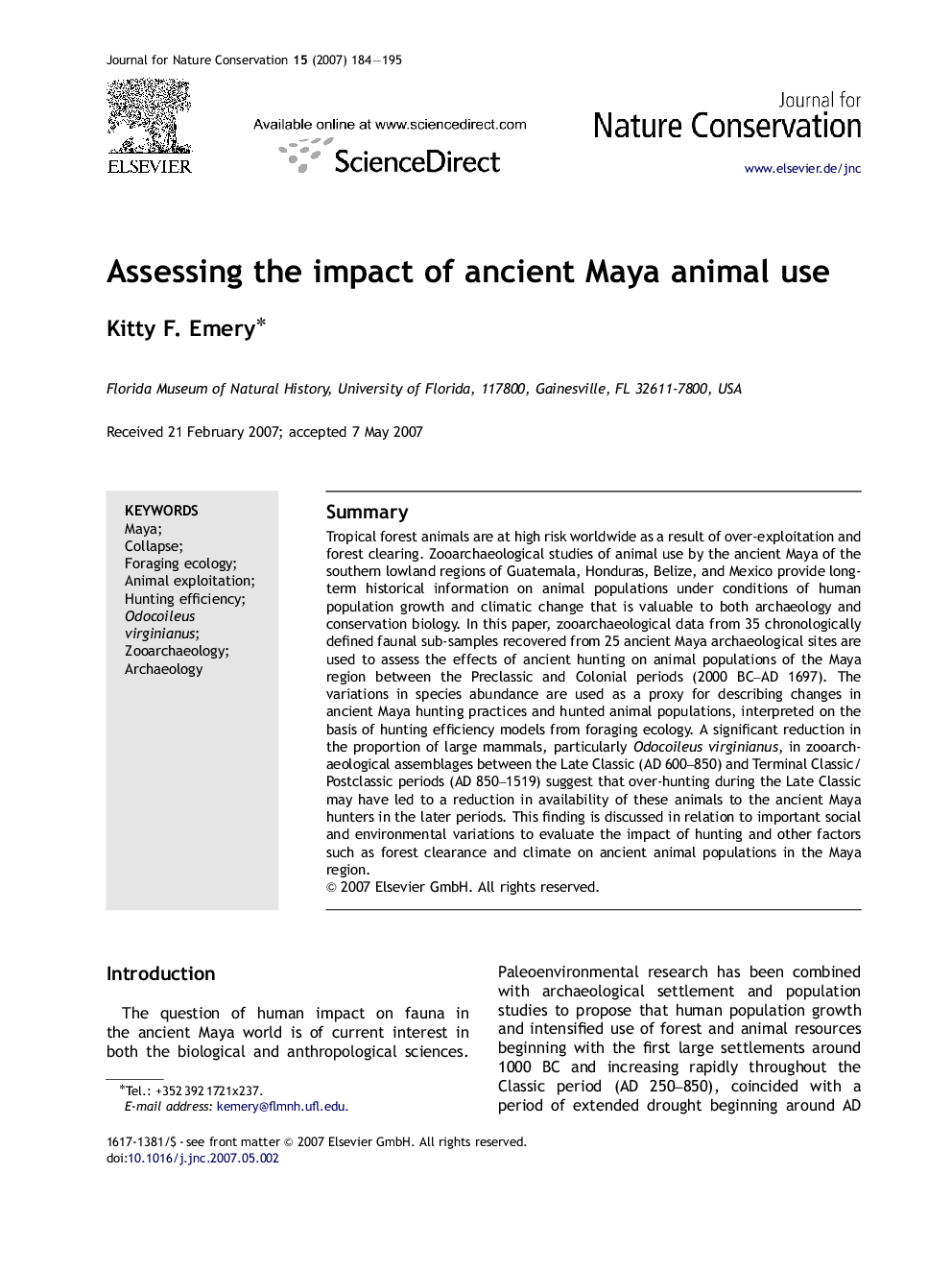| Article ID | Journal | Published Year | Pages | File Type |
|---|---|---|---|---|
| 4400196 | Journal for Nature Conservation | 2007 | 12 Pages |
SummaryTropical forest animals are at high risk worldwide as a result of over-exploitation and forest clearing. Zooarchaeological studies of animal use by the ancient Maya of the southern lowland regions of Guatemala, Honduras, Belize, and Mexico provide long-term historical information on animal populations under conditions of human population growth and climatic change that is valuable to both archaeology and conservation biology. In this paper, zooarchaeological data from 35 chronologically defined faunal sub-samples recovered from 25 ancient Maya archaeological sites are used to assess the effects of ancient hunting on animal populations of the Maya region between the Preclassic and Colonial periods (2000 BC–AD 1697). The variations in species abundance are used as a proxy for describing changes in ancient Maya hunting practices and hunted animal populations, interpreted on the basis of hunting efficiency models from foraging ecology. A significant reduction in the proportion of large mammals, particularly Odocoileus virginianus, in zooarchaeological assemblages between the Late Classic (AD 600–850) and Terminal Classic/Postclassic periods (AD 850–1519) suggest that over-hunting during the Late Classic may have led to a reduction in availability of these animals to the ancient Maya hunters in the later periods. This finding is discussed in relation to important social and environmental variations to evaluate the impact of hunting and other factors such as forest clearance and climate on ancient animal populations in the Maya region.
